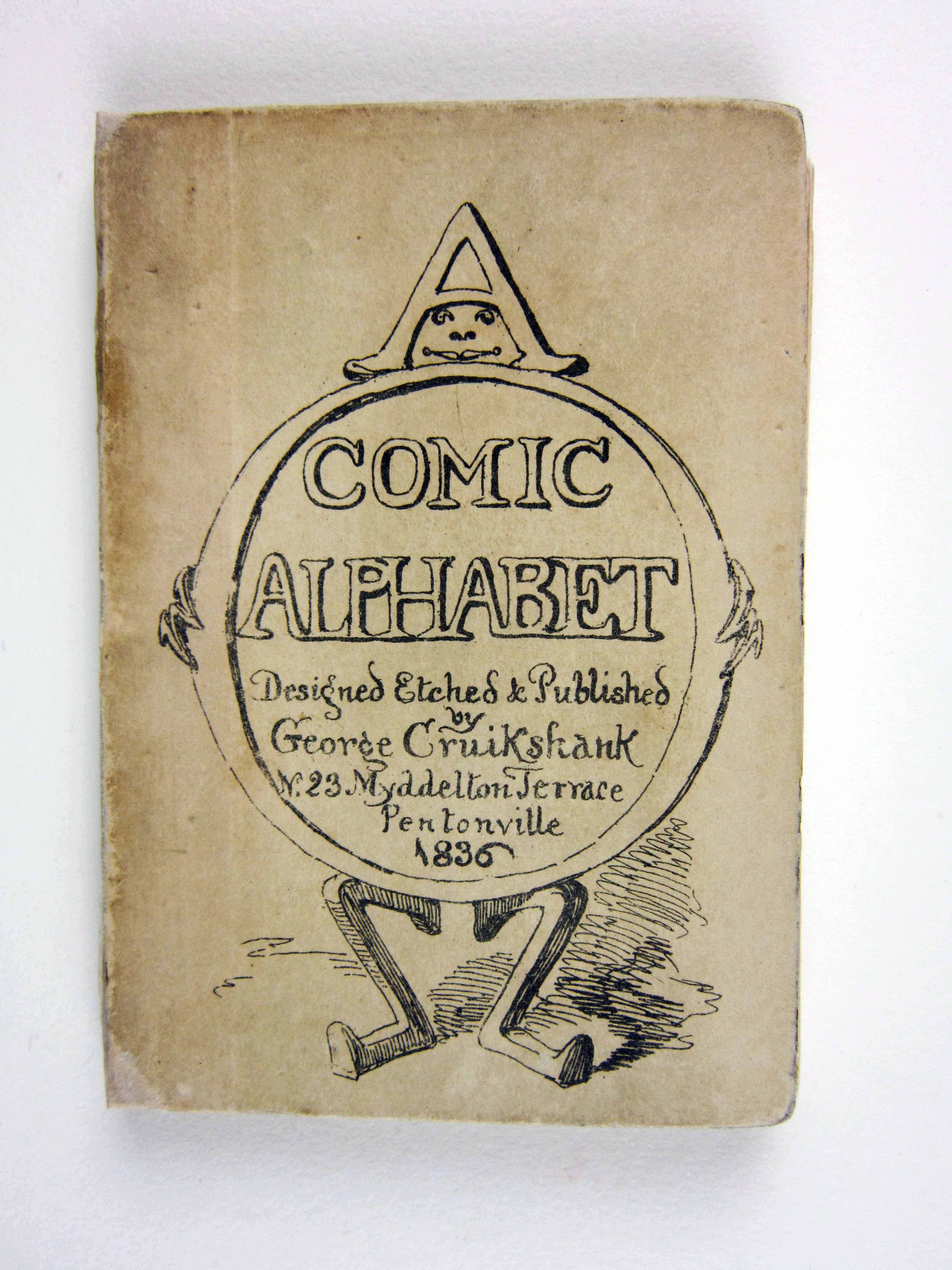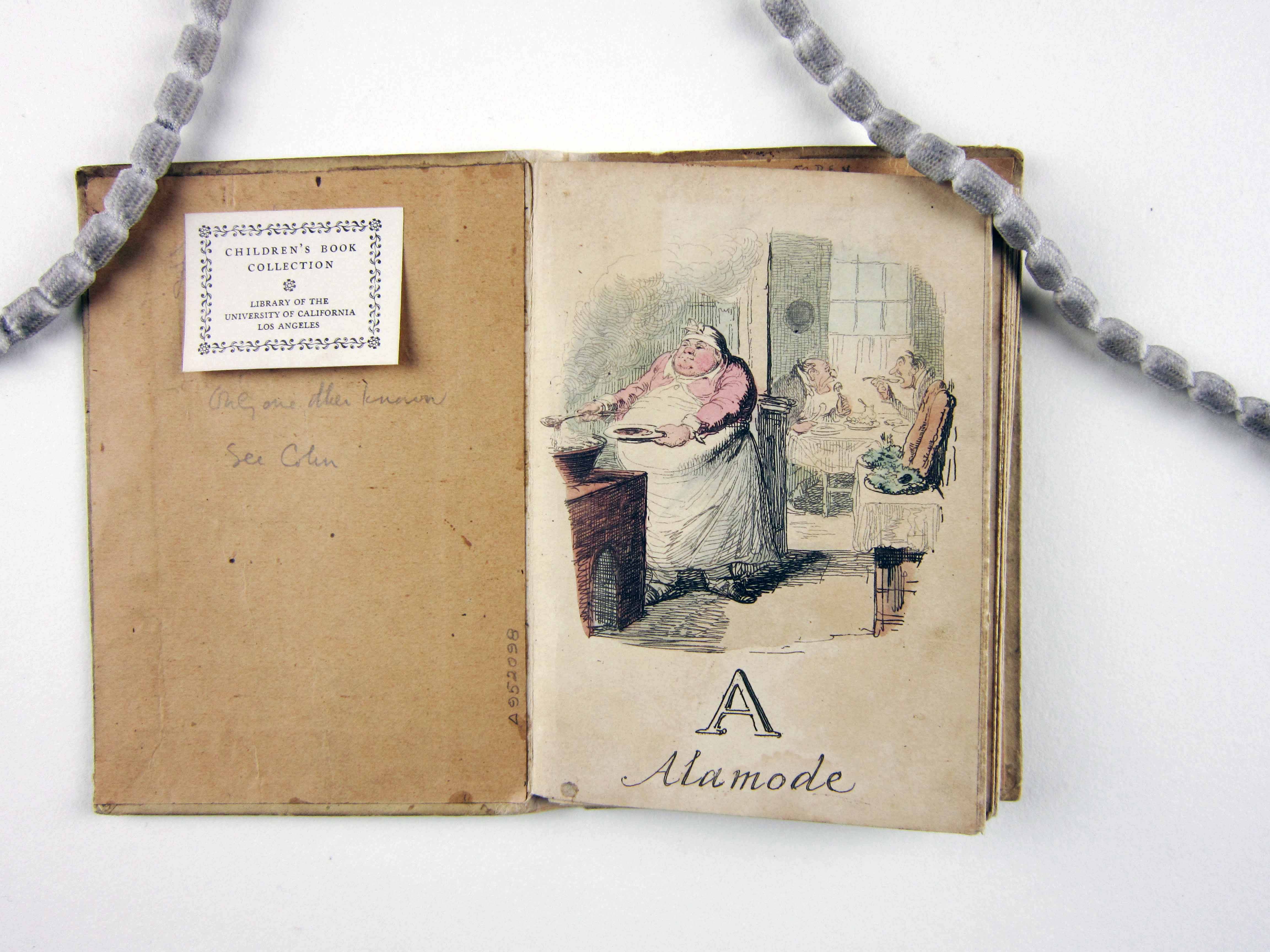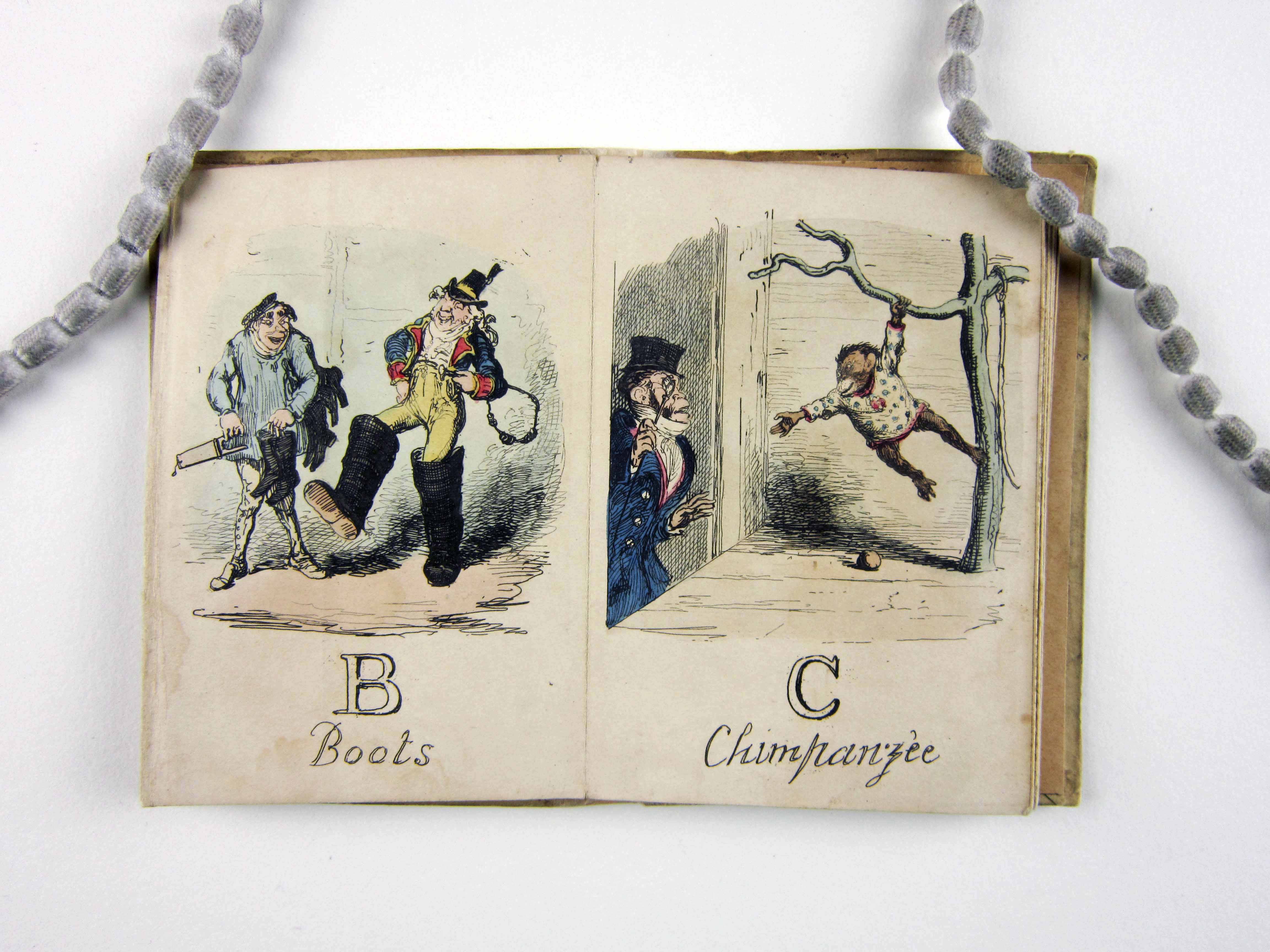

Alphabet books offer a vivid insight into the history of literacy and culture, as well as concepts of childhood. The Children's Book Collection at UCLA contains a rich array of these materials, some well-worn and much-used, some still bright and fresh. Each is a gem of print production and graphical imagery from another time and place. Though the history of alphabet books continues to the present, this exhibit focuses on the works in our collections published between 1700 and 1900, including horn books, primers, works of didacticism and seriousness, whimsy and play.
2. A Jumble ABC
3. A Little Pretty Pocket-Book
4. A New Lottery Book of Birds And Beasts
5. A Pretty Play-Thing for Children of All Denominations
8. ABC of Objects for Home And School
10. ABC with Pictures & Verses
12. Alphabet Et Instruction Pour Les Enfans
16. Dolly's ABC Book
17. Flora's ABC
18. Home ABC
22. Hornbook C. 1700
23. Large Letters for the Little Ones
24. Little ABC Book
25. Little People: An Alphabet
26. Martin's Nursery Battledoor
27. Mother Goose ABC
28. My Darling's ABC
29. Orbis Sensualium Pictus Quadrilinguis
30. People of All Nations: A Useful Toy for Girl Or Boy
31. Picture Alphabet
32. Pretty ABC
33. Railway ABC
34. Rusher's Reading Made Most Easy
38. The Alphabet of Old Friends
40. The Amusing Alphabet for Young Children Beginning To Read
42. The Child's Christian Education
45. The Easter Gift
47. The Favorite Alphabet for the Nursery
49. The Franklin Alphabet And Primer
51. The Golden ABC
55. The Moral And Entertaining Alphabet
57. The Old Testament Alphabet
59. The Picture Alphabet for Little Children
62. The Sunday ABC
63. The Union ABC
64. The Young Child's ABC, Or, First Book
65. Tom Thumb's Alphabet: Picture Baby-Books
67. Warne's Alphabet And Word Book: with Coloured Pictures
68. Wood's Royal Nursery Alphabet
Title A Comic Alphabet



Brief description
Comical alphabet book with caricatures depicting social classes, race, and animals.
Full description
A Comic Alphabet was illustrated and published by the famous British caricaturist George Cruikshank in 1836. A Comic Alphabet is a humorous version of an alphabet book intended for an older audience. The illustrations were printed from etching plates and are characteristic of Cruikshank's satirical sketches and caricatures.
Literacy
A Comic Alphabet invokes graphical literacy to instruct the young reader. Although the content of this book may be targeted for an older and more mature audience, children could still use A Comic Alphabet as a tool for learning how to associate pictures with the letters of the alphabet. This requires a higher level of sophistication and ability to associate.
Letters are not incorporated in to the illustrations, and the connection between the letter and the illustration is not always easily discernible. For example, the letter L is illustrated by a tall, thin man and a short, overweight woman. The caption reads, longitude and latitude. An understanding of the illustration and the caption requires the reader to understand the terms longitude and latitude and to make the association with longitude to the tall, thin man and latitude with the short, overweight woman.
A Comic Alphabet also illustrates cultural literacy for Victorian England. Class and race distinctions are depicted in the illustrations, teaching the young reader differences in society between the poor, middle-class, and wealthy. Because of the comic nature of the book, these distinctions between the classes can be viewed as a critique on society. The humor in A Comic Alphabet also illustrates that literacy was used for entertainment and pleasure.
ChildhoodThe main audience for alphabet books is young children learning to read; yet A Comic Alphabet is an exception to this rule. At first glance, brightly colored illustrations and one to three word captions suggest a targeted young audience. However, the complexity and level of humor in A Comic Alphabet is clearly geared towards a mature audience that can appreciate and understand the jokes being made.
For example, the picture for the letter Z is a ridiculous looking man trying to eat a tree branch that resembles a pig. Vocabulary such as Zoophyte, surpasses the reading comprehension of young children. A Comic Alphabet could have been used as a novelty item in a home that adult readers could enjoy and laugh over as the irony of a children's genre of literature is used to depict and poke fun at adult situations.
IconographyDuring the nineteenth century, George Cruikshank was famous for his sociopolitical caricatures of English life, royalty, and politicians. In A Comic Alphabet, Cruikshank satirizes racial issues, class relations, fashion, and the treatment of animals.
There are several illustrations of humans interacting with animals that portray the humans teasing, observing, or running away from the animals. A man who is finely dressed is pictured walking arm in arm with a poorly dressed chimney sweep covered from head to toe in soot. This picture depicts "E for Equality".
In contrast to the Victorian practice of idealizing domestic life, Cruikshank creates illustrations that portray the wealthy, the middle class, and the working class all looking, at times, ridiculous and comical. Cruikshank's illustrations are humorous and entertaining, but also provide social criticism and insight.
ProductionA Comic Alphabet was written and published by George Cruikshank in 1836. The book is made from one folded strip of paper and the illustrations are printed from twenty-four etching plates.
Cruikshank was a famous caricaturist and book illustrator in nineteenth century England. His early career focused on political satire of the royalty, political parties, and current events. He worked with Charles Dickens and illustrated Sketches by Boz (1836), The Mudfog Papers (1837-38), and Oliver Twist (1838).
During his lifetime, Cruikshank created approximately 10,000 prints, illustrations, and plates. Collections of his works are housed in the British Museum and the Victoria and Albert Museum.
Creator George Cruikshank
Publisher George Cruikshank
Publication place No. 23 Myddelton Terrace Pentonville London, Islington
Date 1836
UCLA Call Number CBC NC1479 .C88c 1836
Repository UCLA Charles E. Young Research Library, Dept. of Special Collections
Dimensions Height 14 cm
Additional Information Inscription: Only one other known/See Colin